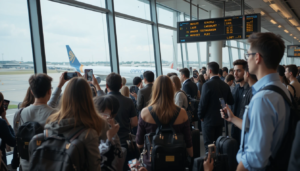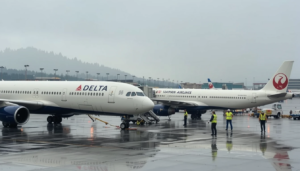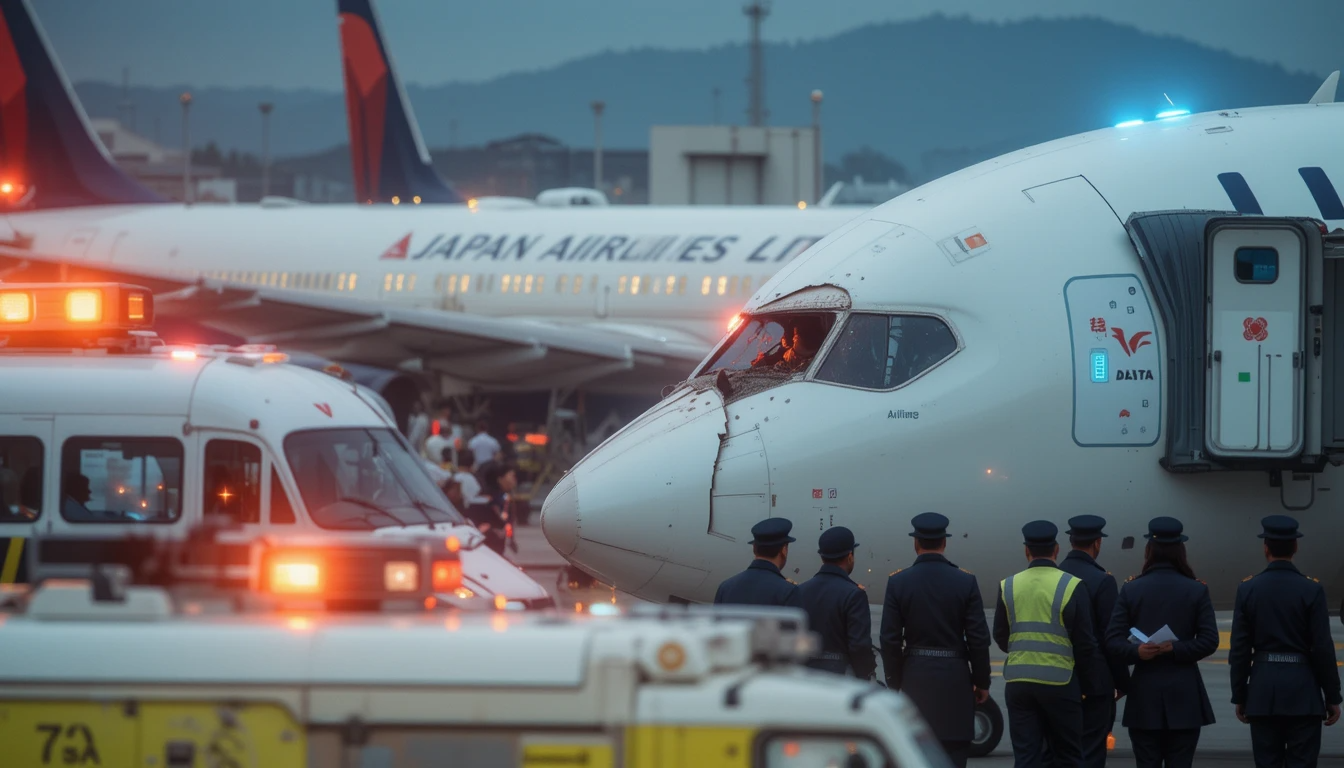In a startling incident at Seattle-Tacoma International Airport (SEA), a Japan Airlines plane collided with a Delta Air Lines aircraft on the ground, raising concerns about aviation safety and ground operations. The collision, which occurred on a taxiway, involved a Japan Airlines Boeing 787-9 and a Delta Air Lines Boeing 737-800. Fortunately, no injuries were reported among passengers or crew members, but the incident has drawn attention to the complexities of airport operations and the importance of stringent safety protocols.
The Incident:
The collision took place just after 10:15 a.m. local time on Wednesday, February 5, 2025. According to officials, Japan Airlines Flight 68, arriving from Tokyo’s Narita International Airport, was taxiing when its right wing struck the tail of a parked Delta Air Lines Flight 1921. The Delta aircraft was stationary, awaiting deicing procedures before its scheduled departure to Puerto Vallarta, Mexico.
At the time of the incident, there were 185 passengers and crew members on board the Japan Airlines plane, while the Delta flight carried 142 passengers. Despite the alarming nature of the collision, all passengers and crew were safely deplaned, and no injuries were reported.
Airport Response and Passenger Experience:
Seattle-Tacoma International Airport quickly mobilized its response teams, including Port of Seattle Fire, Police, and airport operations personnel. In a statement posted on social media, the airport confirmed that all passengers from both flights had been safely brought to the terminal. Airlines worked to accommodate passengers, and efforts were made to move the affected aircraft off the taxiway to minimize disruptions to airport operations.
Jason Chan, a passenger on the Delta flight, described the moment of impact as surreal. He told the Associated Press that the plane “jiggled back and forth” and shook slightly when the collision occurred. Shortly after, the captain informed passengers that the plane’s tail had been struck. Despite the unexpected event, passengers remained calm and were eventually bused back to the terminal. Chan and his group of six travelers made the most of the situation, waiting in the lounge for their rescheduled flight.

Statements from Airlines and Authorities”
Japan Airlines issued a statement confirming that the right wing of its Boeing 787-9 had come into contact with the tail of the Delta aircraft during taxiing. The airline emphasized that no injuries were reported among the 172 passengers and 13 crew members on board.
Delta Air Lines also released a statement, explaining that its Boeing 737-800 was stationary and undergoing deicing procedures when the collision occurred. A Delta spokesperson confirmed that all 142 passengers were being transferred to a new aircraft for their journey to Puerto Vallarta. Like Japan Airlines, Delta reported no injuries to passengers or crew.
The Federal Aviation Administration (FAA) announced that it would investigate the incident to determine the cause and prevent similar occurrences in the future.
Minimal Impact on Airport Operations:
Despite the dramatic nature of the collision, airport operations were minimally affected. The incident occurred on a taxi lane rather than a runway, allowing other flights to continue without significant delays. Seattle-Tacoma International Airport assured passengers that the situation was under control and encouraged travelers to check with their airlines for any updates.
Broader Context: Recent Aviation Incidents:
This collision comes just one week after a tragic midair crash between a passenger plane and an Army Black Hawk helicopter near Washington, D.C., which claimed 67 lives. The recent incidents have sparked renewed discussions about aviation safety, particularly in crowded airspaces and busy airports.
Earlier in the week, Delta Air Lines Flight 2090, traveling from New York’s JFK Airport to Orlando, was diverted to Raleigh due to an unexplained odor in the cabin. Additionally, United Airlines Flight 1382 was evacuated at George Bush Intercontinental Airport in Houston after a reported engine issue. These events highlight the challenges faced by airlines and airports in maintaining safety while managing the complexities of modern air travel.
The Importance of Ground Safety:
While midair collisions are rare, ground incidents at airports are more common and can pose significant risks. Taxiing, deicing, and other ground operations require precise coordination between pilots, ground crews, and air traffic controllers. Even a minor miscommunication or error can lead to accidents, as seen in the Seattle collision.
Airports and airlines must continuously review and update their safety protocols to prevent such incidents. This includes investing in advanced technology, improving communication systems, and providing comprehensive training for all personnel involved in ground operations.

Passenger Safety and Confidence:
For passengers, incidents like these can be unsettling, but they also serve as a reminder of the rigorous safety measures in place within the aviation industry. The fact that no injuries were reported in the Seattle collision is a testament to the effectiveness of these measures.
Airlines and airports must also prioritize clear communication with passengers during and after such incidents. Providing timely updates, offering support, and ensuring smooth rebooking processes can help maintain passenger confidence and trust.
Looking Ahead
As the FAA investigates the Seattle collision, the findings will likely lead to recommendations for improving ground safety procedures. Airlines and airports worldwide will be watching closely, as the lessons learned from this incident could influence global aviation practices.
For now, passengers can take comfort in knowing that incidents like these are rare and that the aviation industry is committed to ensuring their safety. As technology advances and safety protocols evolve, the goal remains clear: to make air travel as safe and efficient as possible for everyone.
Conclusion:
The collision between a Japan Airlines plane and a Delta Air Lines aircraft at Seattle-Tacoma International Airport serves as a reminder of the complexities and challenges of modern aviation. While the incident caused no injuries and had minimal impact on airport operations, it underscores the importance of continuous improvement in ground safety protocols.
As investigations proceed and the aviation industry learns from this event, passengers can remain confident in the safety measures that protect them daily. In the meantime, travelers are encouraged to stay informed, follow airline guidance, and trust in the expertise of the professionals who keep the skies safe.


